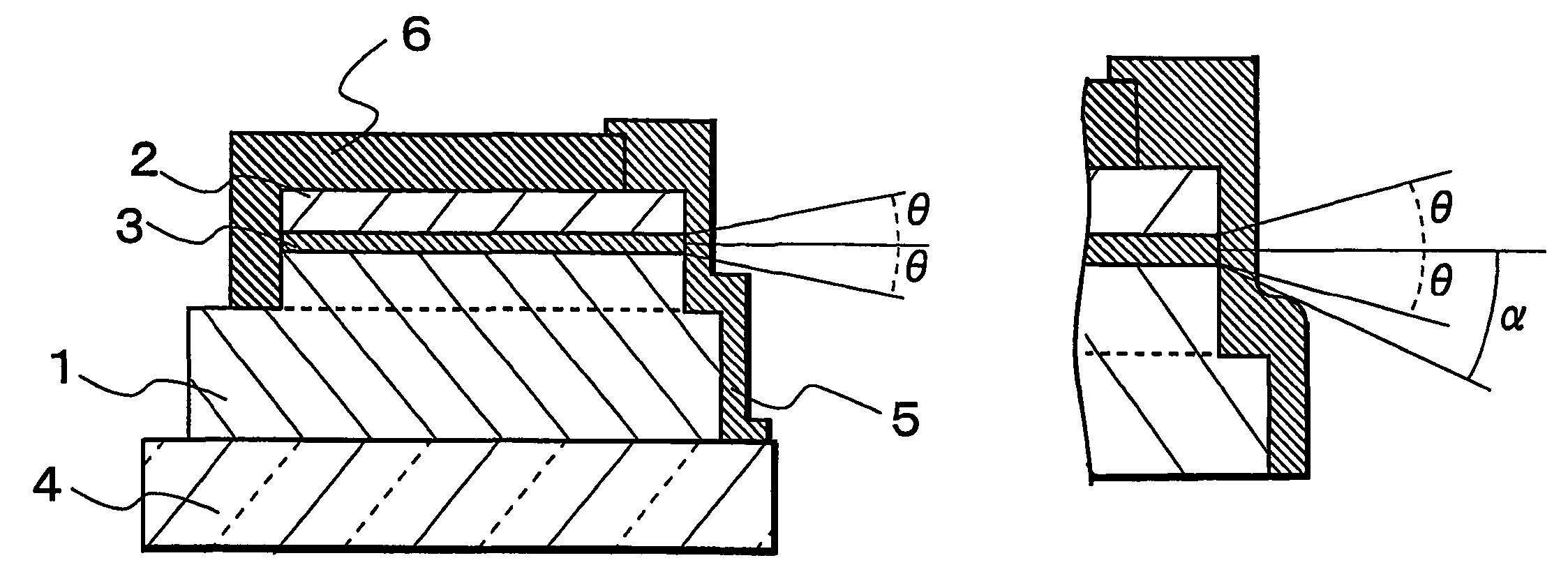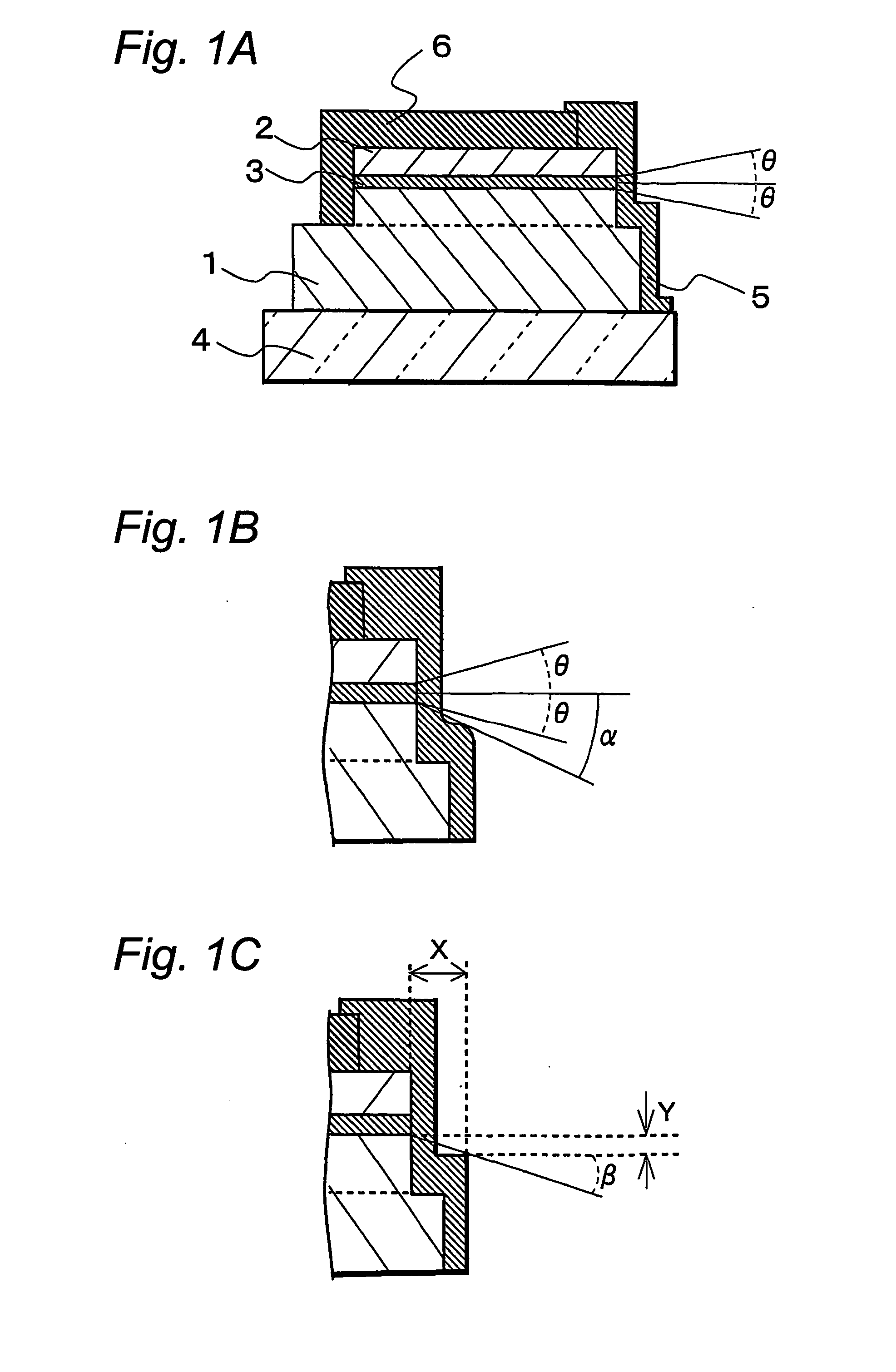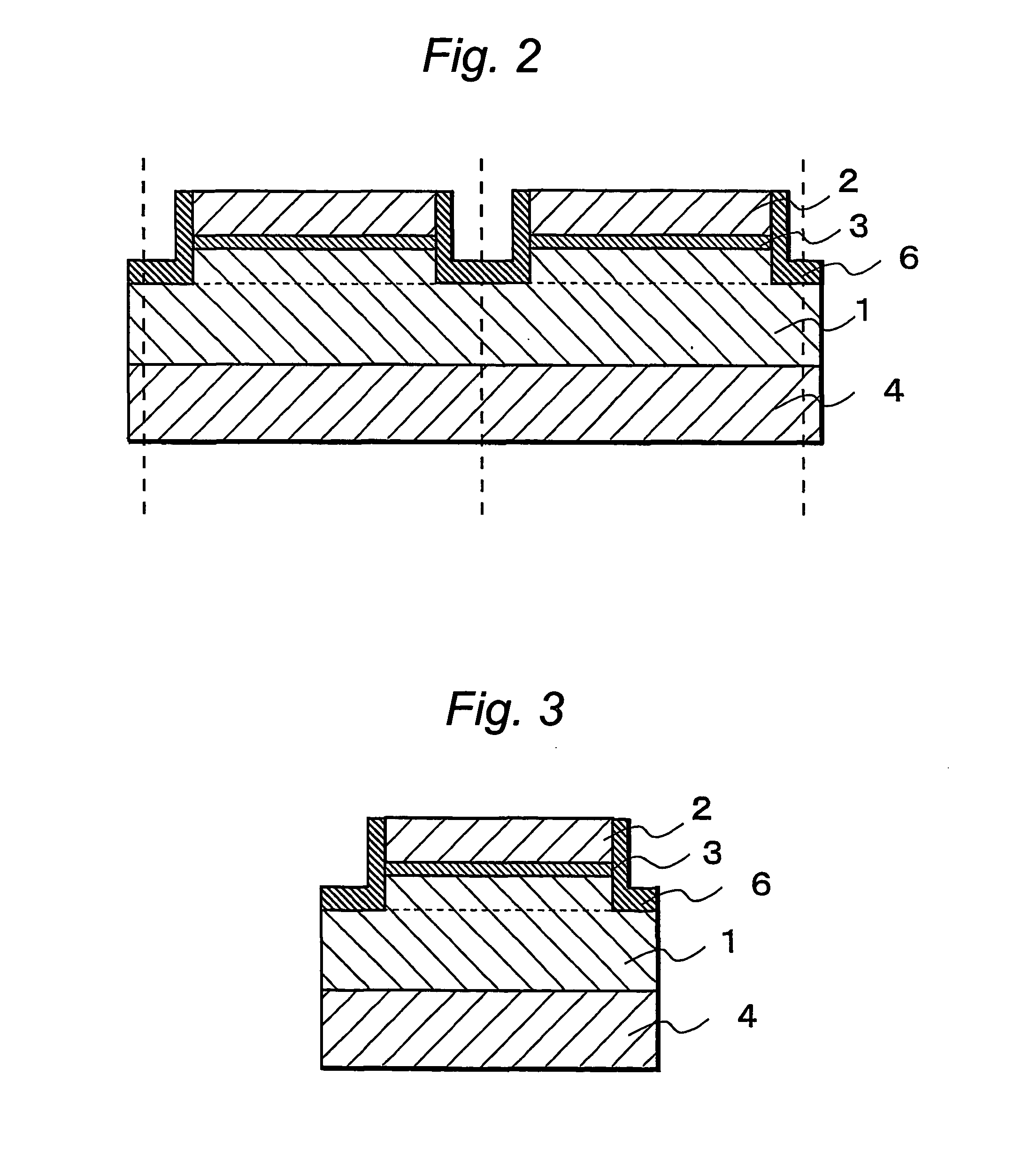Semicondutor laser device and its manufacturing method
a semiconductor and laser technology, applied in the direction of lasers, semiconductor laser structural details, semiconductor lasers, etc., can solve the problems of laser beam blocking, poor laser beam output, and hardly formed reflective films
- Summary
- Abstract
- Description
- Claims
- Application Information
AI Technical Summary
Benefits of technology
Problems solved by technology
Method used
Image
Examples
example 1
[0081] A laser device of a structure as shown in FIG. 1A using a nitride semiconductor is hereafter described. Example 1 uses a hetero substrate of a material different from the nitride semiconductor. The hetero substrate may be of a material different from the nitride semiconductor which material has been known to be able to grow the nitride semiconductor thereon, for example, an insulating substrate such as of sapphire with C plane, R plane or A plane as the principle plane and spinel (MgAl.sub.2O.sub.4), SiC (including 6H, 4H and 3C), ZnS, ZnO, GaAs, Si, an oxide substrate that lattice-matches with nitride semiconductors and the like. As preferable hetero substrates, may be mentioned sapphire and spinel. The hetero substrate may be off-angled, and in this case, a stepwise off-angled substrate is preferable because a base layer of gallium nitride can grow with good crystallinity. Further, in the case where the hetero substrate is used, after the nitride semiconductor is grown as t...
example 2
[0132] In Example 2, on the emission side, the protective film on the resonator face and the protective film on the end face of the projection are formed by separate steps. By thus forming through separate steps the protective films to be formed on end faces facing in the same direction, the protective film on the end face of the projection can be formed to have a different function from that of the protective film on the resonator face.
[0133] For forming such protective films, in Example 2, the protective film is formed on the resonator face on the emission side before the second end-face etch step in which etching is performed until the exposure of the substrate, while in Example 1 the protective film is formed continuously from the resonator face to the end face of the projection on the emission side after the second etch step.
[0134] The same process as in Example 1 is carried out before the protective film on the reflection side is formed of a dielectric multilayer film composed...
example 3
[0136] In Example 3, the protective film on the emission side is not formed to reach the substrate. In the second etch step in Example 1, etching is stopped to such an extent that the base layer formed on the sapphire substrate is exposed. The later steps are performed in the same manner as in Example 1. Thereby, in the last chip formation step, the semiconductor laser device of the invention is completed by dividing the sapphire substrate and the semiconductor layer. It is confirmed that the obtained semiconductor laser device continuously oscillates at an oscillation wavelength of 405 nm at a threshold current density of 20 kA / cm.sup.2 with a power of 30 mW at room temperature. A good beam is obtained in the FFP, especially in the emission full angle (19 to 34 degrees) of FFP-Y. The beam has an aspect ratio of 1.5. The beam exhibits satisfactory characteristics as light sources for optical disk systems. The laser device is free of shift of lateral transverse mode at an optical pow...
PUM
 Login to View More
Login to View More Abstract
Description
Claims
Application Information
 Login to View More
Login to View More - R&D
- Intellectual Property
- Life Sciences
- Materials
- Tech Scout
- Unparalleled Data Quality
- Higher Quality Content
- 60% Fewer Hallucinations
Browse by: Latest US Patents, China's latest patents, Technical Efficacy Thesaurus, Application Domain, Technology Topic, Popular Technical Reports.
© 2025 PatSnap. All rights reserved.Legal|Privacy policy|Modern Slavery Act Transparency Statement|Sitemap|About US| Contact US: help@patsnap.com



